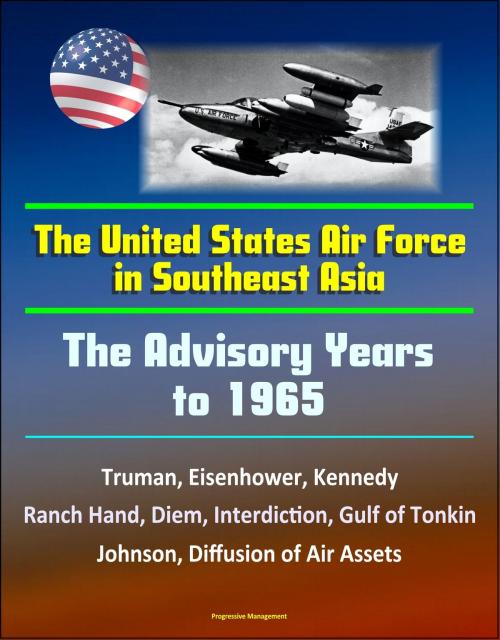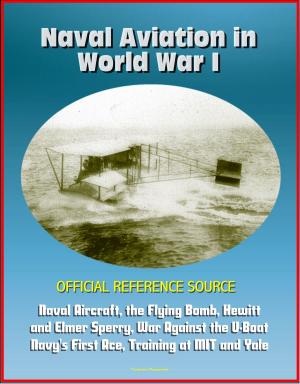The United States Air Force in Southeast Asia: The Advisory Years to 1965 - Truman, Eisenhower, Kennedy, Ranch Hand, Diem, Interdiction, Gulf of Tonkin, Johnson, Diffusion of Air Assets
Nonfiction, History, Military, Vietnam War, Asian, Aviation| Author: | Progressive Management | ISBN: | 9781311795991 |
| Publisher: | Progressive Management | Publication: | August 18, 2015 |
| Imprint: | Smashwords Edition | Language: | English |
| Author: | Progressive Management |
| ISBN: | 9781311795991 |
| Publisher: | Progressive Management |
| Publication: | August 18, 2015 |
| Imprint: | Smashwords Edition |
| Language: | English |
Professionally converted for accurate flowing-text e-book format reproduction, this U.S. Air Force (USAF) publication tells the story of the Air Force's involvement in the Vietnam region from the end of the second World War until the major infusion of American troops into Vietnam in 1965. During these years, and most noticeably after 1961, the Air Force's principal role in Southeast Asia was to advise the Vietnamese Air Force in its struggle against insurgents seeking the collapse of the Saigon government. This story includes some issues of universal applicability to the Air Force: the role of air power in an insurgency, the most effective way to advise a foreign ally, and how to coordinate with other American agencies (both military and civilian) which are doing the same thing. It also deals with issues unique to the Vietnamese conflict: how to coordinate a centralized, technological modern air force with a feudal, decentralized, indigenous one without overwhelming it, and how best to adapt fighter, reconnaissance, airlift, and liaison planes to a jungle environment.
Part One: The Truman Years * I. Origins of the American Commitment to Vietnam * Part Two: The Eisenhower Years * II. Dien Bien Phu * III. The Geneva Agreements and French Withdrawal * IV. U.S. Command Problems in the Pacific: Emphasis on Southeast Asia * V. Strained Civil-Military Relations in South Vietnam, 1957-1960 * Part Three: The Kennedy Years * VI. Initial Challenges and Actions * VII. Opening Farm Gate * VIII. The Taylor Mission * IX. U.S. Command Arrangements: 2d ADVON and MACV * X. Tactical Air Control, Mule Train, and Ranch Hand * XI. Air Policy: Too Cautious? * XII. Farm Gate and the Vietnamese Air Force * XIII. Air Operations, 1962: Interdiction, Strikes, and Reconnaissance * XIV. Ap Bac and Related Matters XV. Air Operations, 1963 * XVI. Collapse of the Diem Government * Part Four: The Johnson Years * XVII. Objectives Confirmed, Methods Expanded * XVIII. The War in Vietnam, 1964 * XIX. The Gulf of Tonkin Incident * XX. Diffusion of Air Assets * XXI. End of the Advisory Phase
About 700 miles west of the Philippine Islands, across the China Sea, lies the great Indochinese peninsula. China is to the north, Burma to the west, and Malaysia to the south. The western part of the peninsula holds Thailand (ancient Siam) while the eastern portion contains Laos, Cambodia, and Vietnam (formerly elements of French Indochina). This area of Southeast Asia (SEA) attracted little American interest and attention until the closing months of World War II. American policymakers who shared President Franklin D. Roosevelt's anticolonial sentiments expected Indochina to be freed from French hegemony. Yet France reestablished control over Laos, Cambodia, and Vietnam, which had been part of the French Empire since the 19th century. To some extent this occurred because the British government wished to resuscitate France as a European power to help Britain balance somewhat the growing strength of the Soviet Union. The United States acquiesced in this aim, and increasingly so as the confrontation of the postwar superpowers evolved into the cold war. It was the cold war that drew the United States into this region.
Professionally converted for accurate flowing-text e-book format reproduction, this U.S. Air Force (USAF) publication tells the story of the Air Force's involvement in the Vietnam region from the end of the second World War until the major infusion of American troops into Vietnam in 1965. During these years, and most noticeably after 1961, the Air Force's principal role in Southeast Asia was to advise the Vietnamese Air Force in its struggle against insurgents seeking the collapse of the Saigon government. This story includes some issues of universal applicability to the Air Force: the role of air power in an insurgency, the most effective way to advise a foreign ally, and how to coordinate with other American agencies (both military and civilian) which are doing the same thing. It also deals with issues unique to the Vietnamese conflict: how to coordinate a centralized, technological modern air force with a feudal, decentralized, indigenous one without overwhelming it, and how best to adapt fighter, reconnaissance, airlift, and liaison planes to a jungle environment.
Part One: The Truman Years * I. Origins of the American Commitment to Vietnam * Part Two: The Eisenhower Years * II. Dien Bien Phu * III. The Geneva Agreements and French Withdrawal * IV. U.S. Command Problems in the Pacific: Emphasis on Southeast Asia * V. Strained Civil-Military Relations in South Vietnam, 1957-1960 * Part Three: The Kennedy Years * VI. Initial Challenges and Actions * VII. Opening Farm Gate * VIII. The Taylor Mission * IX. U.S. Command Arrangements: 2d ADVON and MACV * X. Tactical Air Control, Mule Train, and Ranch Hand * XI. Air Policy: Too Cautious? * XII. Farm Gate and the Vietnamese Air Force * XIII. Air Operations, 1962: Interdiction, Strikes, and Reconnaissance * XIV. Ap Bac and Related Matters XV. Air Operations, 1963 * XVI. Collapse of the Diem Government * Part Four: The Johnson Years * XVII. Objectives Confirmed, Methods Expanded * XVIII. The War in Vietnam, 1964 * XIX. The Gulf of Tonkin Incident * XX. Diffusion of Air Assets * XXI. End of the Advisory Phase
About 700 miles west of the Philippine Islands, across the China Sea, lies the great Indochinese peninsula. China is to the north, Burma to the west, and Malaysia to the south. The western part of the peninsula holds Thailand (ancient Siam) while the eastern portion contains Laos, Cambodia, and Vietnam (formerly elements of French Indochina). This area of Southeast Asia (SEA) attracted little American interest and attention until the closing months of World War II. American policymakers who shared President Franklin D. Roosevelt's anticolonial sentiments expected Indochina to be freed from French hegemony. Yet France reestablished control over Laos, Cambodia, and Vietnam, which had been part of the French Empire since the 19th century. To some extent this occurred because the British government wished to resuscitate France as a European power to help Britain balance somewhat the growing strength of the Soviet Union. The United States acquiesced in this aim, and increasingly so as the confrontation of the postwar superpowers evolved into the cold war. It was the cold war that drew the United States into this region.















